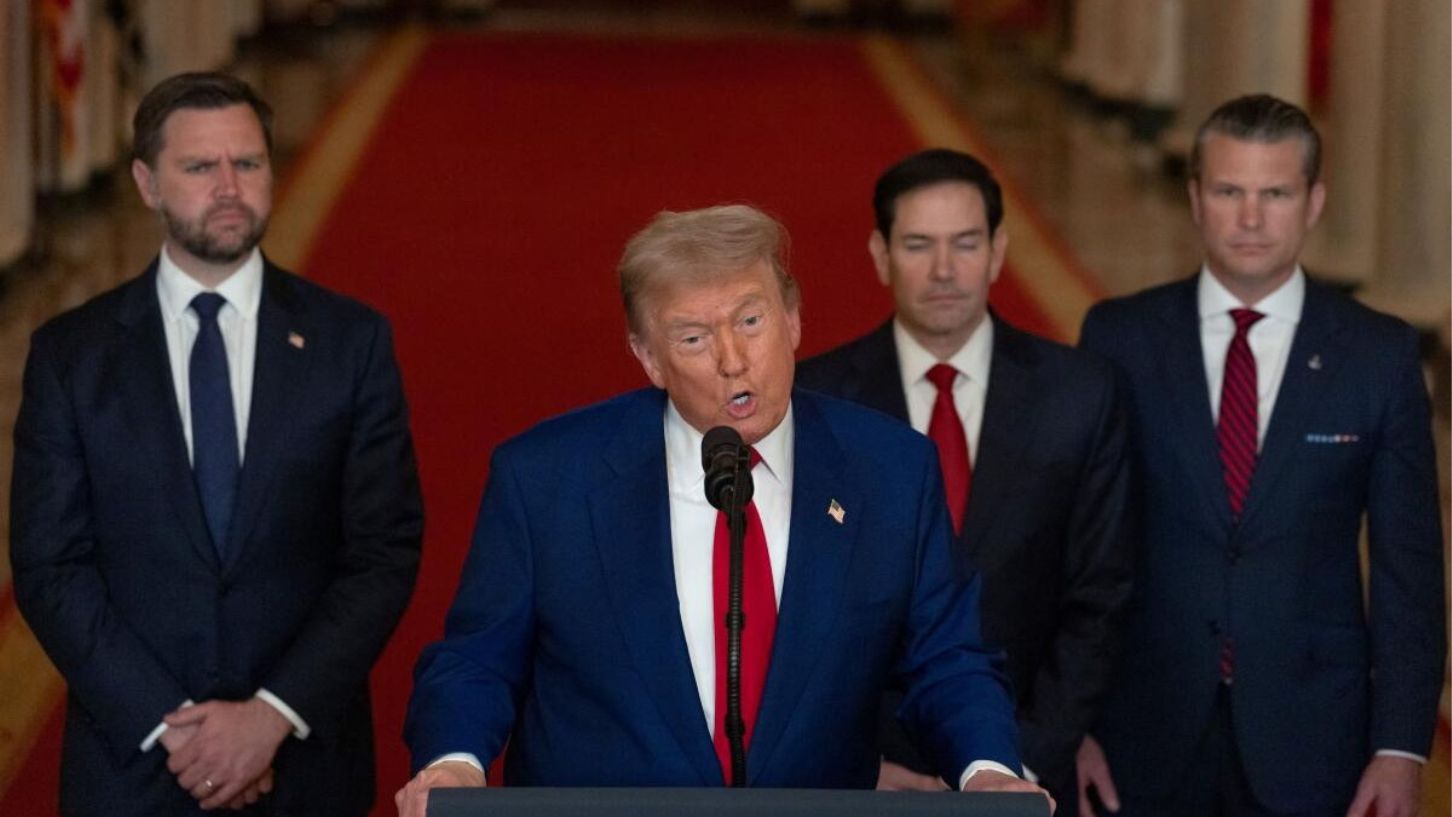Trump Iran decision strikes at the heart of U.S. foreign policy and domestic politics, marking one of the most dramatic escalations in recent American history. On June 21–22, 2025, President Donald Trump authorized large-scale airstrikes on three fortified Iranian nuclear facilities—Fordow, Natanz, and Isfahan—using B‑2 stealth bombers, Tomahawk cruise missiles, and massive bunker-buster bombs. This action represented a profound shift from his previous stance against “stupid wars,” aligning the U.S. more closely with Israel in a risky gambit under his “America First” doctrine.
Trump Iran decision signals a surprising foreign policy pivot.
Trump’s Iran decision struck a blow to his earlier reluctance to intervene abroad. Once critical of prolonged Middle East conflicts, Trump now declared the strike a “spectacular military success” and warned Iran: “Make peace or face more devastation”. The operation—dubbed “Operation Midnight Hammer”—used 14 GBU‑57 bunker-busters dropped by seven B‑2 bombers, 30 Tomahawk missiles, and involved more than 125 aircraft. The targets sustained “extremely severe” damage according to military assessments.
Bunker-buster bombs and strategic surprise
The choice of hard-hitting munitions showcased the strike’s intent: not just degradation, but eradication of nuclear infrastructure. Fordow, buried deep in a mountain, required the Massive Ordnance Penetrator. The deployment was kept secret until post-strike briefings to maintain operational surprise and strategic momentum.
The toll on diplomacy and Congress
Trump’s unilateral motion bypassed Congress, triggering concern from legislators on both sides. Some Republicans, like Sen. Lindsey Graham, applauded the decisive strike, while figures such as Rep. Marjorie Taylor Greene and Rep. Thomas Massie decried its constitutionality. Democrats, led by Senators Tim Kaine and Hakeem Jeffries, introduced a war powers resolution, raising concerns about surveillance and questioning whether war powers belong solely to the government.
Possible Iranian retaliation and global risks
Iran responded swiftly, launching missiles at Israel and signaling that “all options are on the table,” including threats to close the Strait of Hormuz. This could spike global oil prices and threaten world trade routes. Meanwhile, the Department of Homeland Security issued a “heightened threat” alert, warning of possible attacks or cyberattacks on U.S. soil.
Impact on U.S. allies and global strategy
Allied governments reacted with alarm. UN Secretary‑General António Guterres called the strikes a “dangerous escalation.” European leaders pushed for restraint. The result: U.S. focus shifted sharply away from China and Indo‑Pacific priorities toward a crisis in the Middle East.
Israel, Trump’s closest regional partner in this, praised the decision. Netanyahu said the coordination with the U.S. marked a “historic turning point”. Yet this optimism increased pressure on allied nations like Australia to reconsider their involvement in strategic partnerships like AUKUS.
Domestic political fallout and MAGA divisions
The strike fractured Trump’s populist base. Many MAGA leaders who once welcomed his foreign policy assertiveness now feared entanglement in a prolonged war. Isolationist Republicans, including Massie and Davidson, voiced constitutional and strategic concerns. In contrast, other Republicans—including Senate leaders—defended Trump’s swift action.
Broader consequences and legacy questions
1. Nuclear rollback: U.S. officials assert the strike set back Iran’s nuclear program “by a very long time”.
2. Diplomacy collapse: The move came just weeks after failed indirect negotiations in Rome, underscoring the collapse of diplomatic efforts.
3. War escalation risks: Analysts warn Iran may escalate via proxy groups, cyberattacks, or targeting U.S. forces in the region, drawing America into deeper conflict.
4. Constitutional precedent: The bypassing of Congress could set a precedent for future military engagements without legislative approval.
Final analysis: strategic success or perilous gamble?
Trump labels the operation an operational masterpiece, destined to force Iran to the negotiating table on U.S. terms. Yet critics argue it’s a strategic gamble: intelligence suggested Iran wasn’t actively building a bomb; there were questions over legality and little clarity on how long-term goals would be achieved. As of June 23, 2025, the world awaits Iran’s full response and the ripple effects across global diplomacy, security, and domestic politics.
Conclusion
Trump Iran selection moves the spotlight to the excellent line between strong deterrence and reckless escalation. With U.S.-Iran relations teetering and global repercussions mounting, the coming days and weeks will outline whether this bold flow succeeds or spirals into broader warfare. What stays positive is that the U.S. Has entered a new bankruptcy—one that will shape President Trump’s legacy and the future of American engagement overseas.



